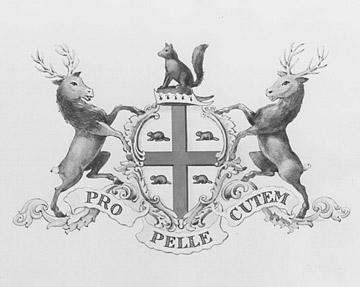I'm back again. Run!!!
Great blade. I'd be delighted.
No pics of course of one oldie I put a short handle on and carried a long time.
I was into living history and blackpowder shoots quite a while.
That brought more study of the fur trade. But in my area the 1600's appealed to me the most.
Your piece is not a "hawk" / tomahawk in the trade sense.
(Bet I could throw it well though.)
It is versatile and at seven inches it could ride in a belt. In a ring. Or a frog , or a sheath.
As the fur trade petered out hawks started to dim. At least the supply of new ones.
A certain blacksmith could make what you wanted though.
Your piece leans towards what would evolve into roofing hatchets. Yours is absent the nail pulling notch that I curse in looking for an oldie.
I've a couple lil guys that have/had two notches! (But thier old and cute and handy so they stay.) They get called crate hatchets.
Lots of different tools in carpentry. And they are part of tool evolution too.
The poll on yours allows using a maul , (a stout round of hardwood would suffice) to hit the poll to split wood. Or reduce stuff for kindling.
The width of the blade and eye size wouldn't make me want it as a felling blade first choice.
But it's still a versatile pattern for lighter behavior.
You've seen the Biscayne ax head design. Imagine one laid atop your piece and the extra metal removed from yours.
You would have an oblong eyed polled ax. With a different design. But it's there in your piece. Plus of course extra..
I've seen old hawks broken at the eye from pounding with the back. A poll has value. But was not as economical in making. Both in material and labor.
Small polls (like our modern hammers business areas) mushroomed easily on old iron that only had hardened steel inserts for blade edges. Your pieces surface is greater. And could be dressed with a file more than a mushroomed small polled ax before getting too reduced.
As T.H. hints yours is newer than the fur trade era.
I'd hazard it predates more common notched roofing hatchets.
It's poll is a proven good style.
It is a wide blade. Not one for crude big stock work or heavy whacking.
The Mandan liked a wide blade. Like a triangle. I don't know if the Lewis and Clark records show the design...But thier member with blacksmithing skills proved highly valuable in making blades/axes for one native group. (Mandan or other?) They knew what they wanted though.
Mandan axes can be found in a search.
Your piece is forge welded. Figure out when non forge welded became the common method (and know a smith could still exist after) as industries grew to get a guess of age.
Civil war camp axes looked like roofing hatchets , alas look there's a nail notch!
Yet during that war as with many other wars , tools being produced by whomever could make them saw varied changes in design by home builders.
Hawks and similar trade blades had round eyes. Yours doesn't.
Camp axes popular in civil war pics have the notch , yours doesn't.
Boarding axes had real wide blades. And hammer type polls. Your poll don't match.
Danish blades were extra wide at the bit. Yours doesn't match.
The fun (or frustration) can be when you or I could have one made. Between what we want and the builders "school" of design and a tools ability to work comes a more custom result.
But all based on something...
Did some Hudson Bay axes have polls and elongated eyes in the 1820s? There are some claims...
I didn't catch a date on these. But see elongated eyes and more polls than roundeyed hawks/axes show.
IDENTIFICATION AND HISTORY OF HUDSON'S BAY COMPANY
www.furtradetomahawks.com









